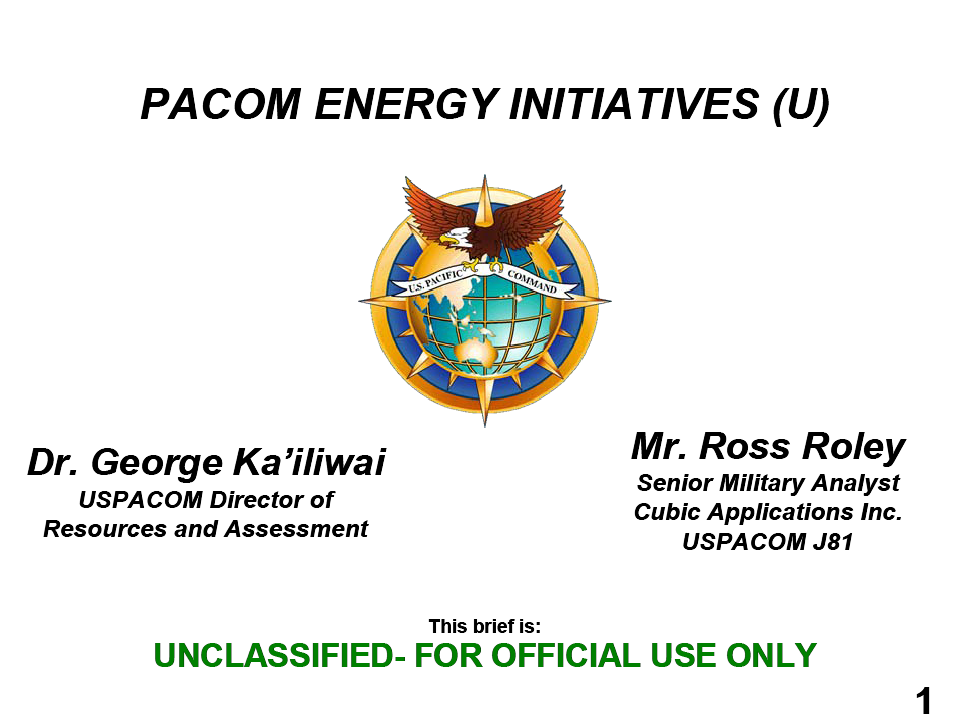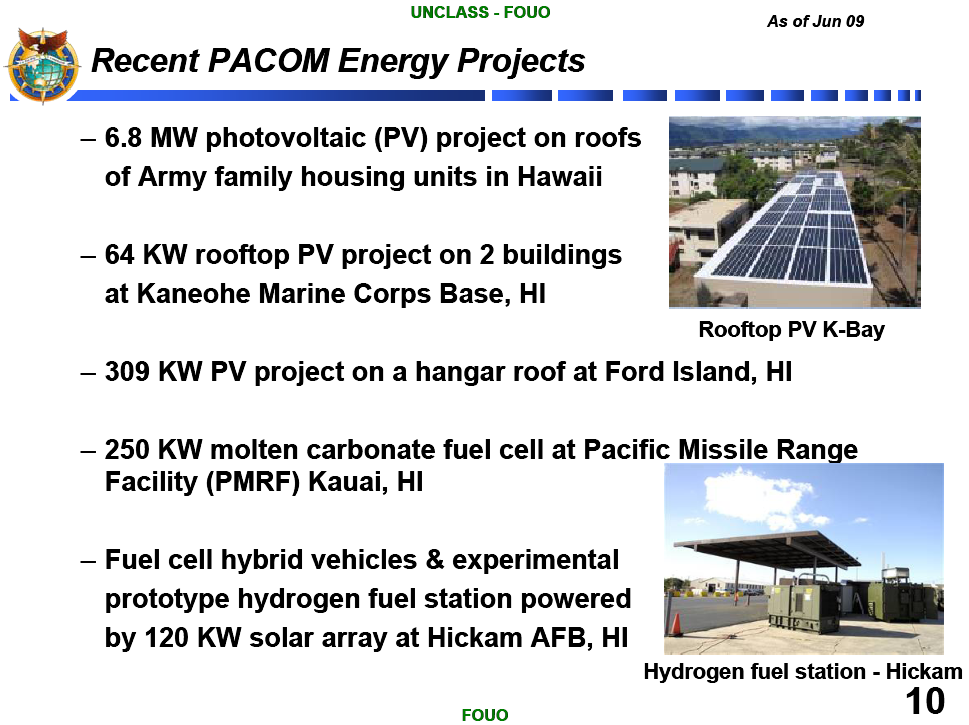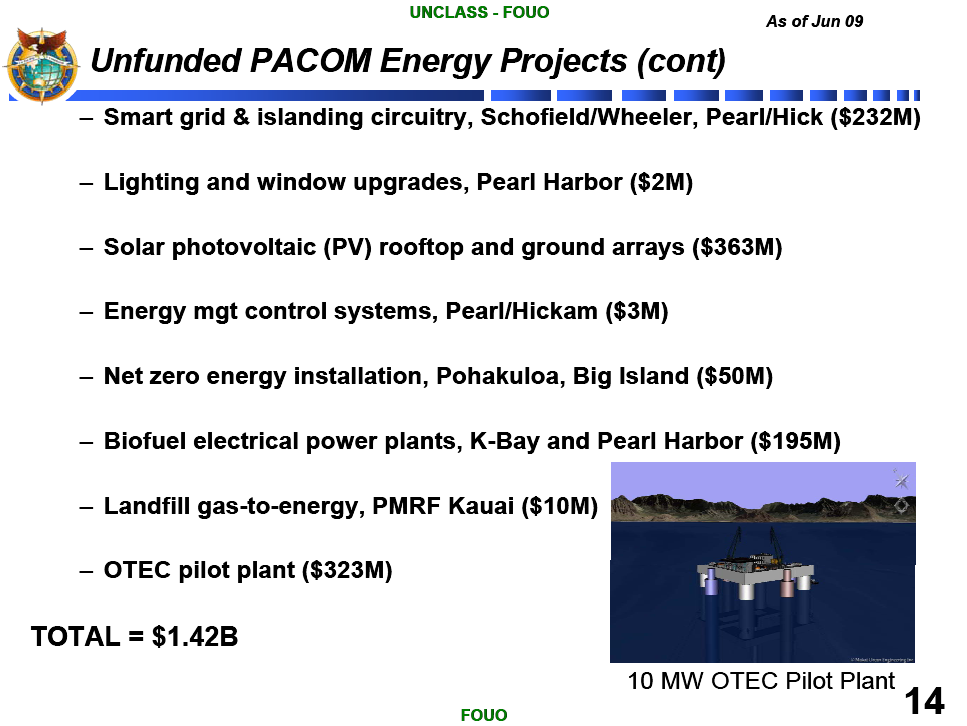USPACOM Director of Resources and Assessment
- Dr. George Ka’iliwai
- 19 pages
- For Official Use Only
- June 9, 2009
Overview
• Strategies – In Two Phases
• Funded Energy Projects
• Unfunded Energy Projects
• FEMP Proposal
• Energy Experimentation
• Questions
PACOM Energy Strategy X 2
• Energy Partnership Strategy with the State of Hawaii
– Target completion date is Summer 09
• Energy Security Strategy for the broader AOR
– To be completed in fall 09
• Over-arching rationale:
– Be good neighbors to the State of Hawai’i
– Improve energy security across the Pacific
– Free up resources for mission requirements
Strategy Structure
• A PACOM Energy Partnership Strategy with:
– Vision Statement
– Goals
– Sub-goals
– Objectives
– Supporting information• Consistent with and supportive of:
– Nat’l Security Strategy
– Nat’l sea state change & new administration’s views on energy
– Nat’l Defense Strategy and other OSD policies/strategy
– PACOM mission, vision and priorities
– Service strategies
– Host nation and state policies/strategy
– Other COCOM energy strategies…
Progress to Date
• Convened a forum of mid-level stakeholders
– PACOM J3, J4, J5, J8, PACFLT, PACAF, USARPAC, MARFORPAC, NAVFAC, IMCOM, Corps of Engineers, Coast Guard, DESC, DOE, State of Hawaii, Asia-Pacific Center, etc. (Inclusive rather than exclusive)
– Chaired by J8. Facilitated by J81
– Collaborative vice directive process
– First step in permanent decision-making body and possible funding conduit
• Developed Organizational Charter
• Developed vision statement, strategic goal and sub-goals for partnership with the State of Hawaii
Progress to Date (cont)
• Charter Statement:
“The PACOM Energy Partnership and Strategy Council (PEPSC) develops and supports implementation of energy partnership strategies in the Pacific.”
State Partnership
• Vision Statement:“USPACOM, in partnership with the State of Hawaii, develops key strategies and implements innovative solutions to harness clean, efficient, secure, renewable and sustainable energy for the benefit of the people of Hawaii and the Asia Pacific Region.”
• Strategic Goal:
“Match or exceed the State of Hawaii goals.”
Progress to Date – State Partnership Sub-goals
• Minimize dependence on fossil fuels
– Reduce power consumption
• Reduce consumption at least 3% per yr and 30% by 2015
– Reduce petroleum use in ground transportation (TBD)
• Develop renewable energy resources
– Maximize clean alternative energy
• 10% renewable by 2010, 15% by 2015, 25% by 2020, 40% by 2030
• 100% of new on-base distributed generation electricity will be renewable with the following exceptions:
– Fuel fired electric plants will be biofuel capable and will use biofuel when feasible
– Tactical and mobile electrical generating systems are excluded
…



